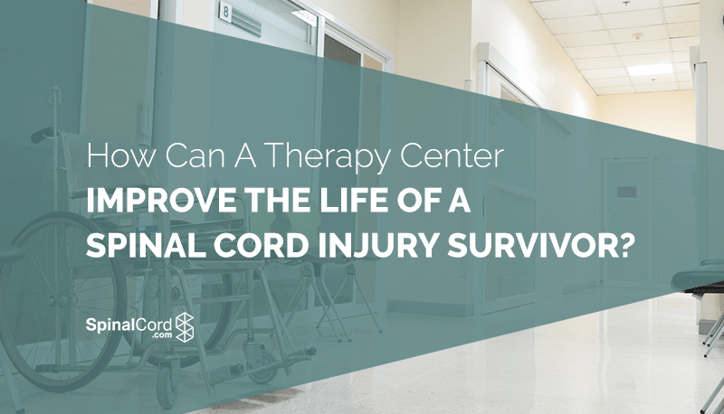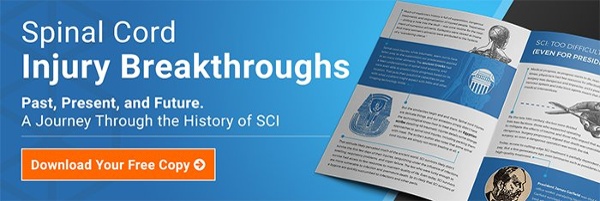How Activity-Based Therapy Centers Improve Life for SCI Survivors

A spinal cord injury (SCI) can have many severe and long-lasting effects on the person who is injured. These effects vary depending on the location of the injury and whether it’s “complete” or “incomplete.”
The recovery & rehabilitation process for SCI survivors can be a long and arduous journey. It takes time to heal, to adapt, and to rebuild one’s sense of self after such a drastic event. Despite the difficulties, thousands of people face the challenges of life after SCI every day without giving up or losing hope.
One of the tools that some SCI survivors use to cope with or even overcome some of their limitations is activity-based therapy—the kind of therapy offered by programs such as NextStep.
These activity-based therapy centers can improve life for SCI survivors in a number of ways, including:
1: Strengthening the Body
One of the key benefits of an activity-based therapy center is that it can help people with spinal cord injuries remaster their bodies and improve their overall physical health. Even people who have been rendered quadriplegic by their injuries have benefited from more active physical therapy regimens.
One SCI survivor, David Hill, lost the use of his arms and legs following a C4/C5 spinal cord injury. Despite becoming a paraplegic, he still goes to activity-based therapy centers as often as he can.
When asked about how his time at the NextStep activity-based therapy center helped him, David said: “I definitely gained more control of my trunk. Because, I wasn’t able to hold myself up, but I can now if I have my arms to my side. I have more control front to back and side to side now.” For someone without the use of their arms or legs, this can be an enormous game-changer for their quality of life.
2: Improving Mood and Sense of Self to Fight Depression
The loss of physical function can be emotionally devastating for a number of reasons. This can lead to struggles with depression. In fact, according to statistics cited by the University of Washington, “estimated rates of depression among people with SCI range from 11% to 37%.” The average rate of depression among Americans is “about 1 in 20,” according to those same statistics.
This means that the average rate of depression among SCI survivors is anywhere from 2 to 7 times that of the general population.
Activity-based therapy centers help combat depression among SCI survivors in a number of ways:
- Improving Function. One of the basic effects of therapy is that it helps restore some control over the body. This helps to build confidence and sense of self-worth for those who have difficulty controlling their bodies.
- Getting Out of the Chair. For quadriplegics like David, “just getting out of the chair is such a relief. It’s just really great for my mental state.” There’s a certain sense of freedom that comes with being able to get out of the wheelchair for a few minutes or hours that brings elation and joy.
- Companionship with Others. Activity-based therapy centers are a great opportunity for SCI survivors to reach out and connect with others who understand their struggles and needs—whether they’re other SCI survivors or therapists/trainers. Todd Krieg, an SCI survivor who became injured in a Motocross accident, met his fiancé, Amanda Diesen, at the Project Walk activity-based therapy center! She was a trainer for the program who worked with Todd on a couple of occasions. This relationship did a lot to help Todd through his rehabilitation.
In these ways, therapy centers with a focus on activities that get SCI survivors out of the chair can help survivors fight depression.
It is important to note that activity-based therapy centers aren’t the only way to get these benefits. Therapy centers like NextStep can be one of the most effective ways to get all of them at once, however.
Other Resources That Can Help SCI Survivors
If there aren’t any activity-based therapy centers in your area, there may be other resources available to you that can help.
For example, even if there isn’t a therapy center near you, there may be a support group in your area where you can go to share your story, swap exercise & daily living tips, and just hang out with others who can sympathize with your situation.
Odds are that your physician can help direct you to such an organization.
There are also online resources—like this website—that can help by providing advice or showing examples of others who have dealt with what you’ve dealt with and how they overcame challenges. Other potential online resources include helpful instructional videos, like these ones by Mason Ellis!
Another critical resource that can help SCI survivors would be their friends and family. Having the support of friends and family can be vital for your emotional wellbeing. Also, having someone there to help out with getting your house rearranged so you can tackle everyday tasks can make life easier as well.
Whether you go to an activity-based therapy center, a local rehab clinic, or just to gatherings of people who have been through what you’re going through, there are many resources that can help you get through the challenges that come with a spinal cord injury!
Stay Updated on Advancements On Traumatic Brain &
Spinal Cord Injuries
About the Author





